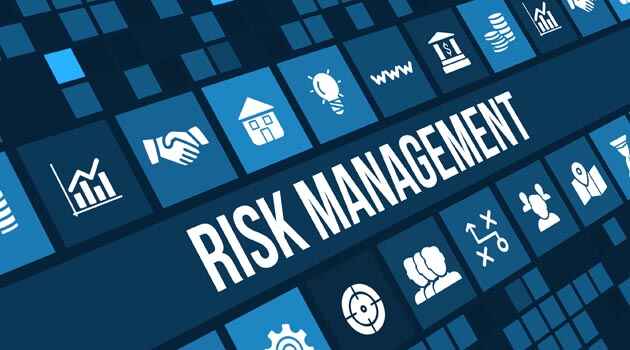Importance of Risk Management and Insurance in Personal Finance, What is Risk Management and Insurance?, Role of Insurance in Risk Management, Types of Insurance Coverage,
Introduction
When it comes to navigating the complex landscape of personal finance, risk management and insurance play a pivotal role in securing your financial well-being. Life is full of uncertainties, and unexpected events can have a significant impact on your financial stability. In this article, we will delve into the importance of risk management and insurance in personal finance, providing you with a comprehensive guide on how to protect yourself and your loved ones from financial pitfalls.
Defining Risk and its Types
Before delving into the specifics of risk management, it’s crucial to understand what risk entails. Risk is the potential for loss or harm resulting from unforeseen events. There are various types of risks, including financial, health-related, natural disasters, and more.
The Significance of Risk Management
Risk management involves the strategies and techniques individuals use to identify, assess, and mitigate potential risks. It’s a proactive approach to safeguarding your finances by anticipating and preparing for unforeseen circumstances. By having a robust risk management plan, you can reduce the negative impact of unexpected events on your financial stability.
Role of Insurance in Risk Mitigation
Insurance acts as a vital tool in the risk management toolkit. It provides a safety net that helps individuals recover financially from various adverse situations. Health insurance, auto insurance, life insurance, and homeowner’s insurance are just a few examples of the different types of insurance that can help mitigate risks.

Types of Insurance Coverage
1. Health Insurance :
Health-related expenses can be significant, especially during medical emergencies. Health insurance covers medical bills, hospital stays, prescription medications, and preventive care, ensuring you receive the necessary treatment without depleting your savings.
2. Auto Insurance :
Auto accidents can lead to substantial repair costs and liabilities. Auto insurance covers damages to your vehicle and any potential legal obligations arising from accidents.
3. Life Insurance :
Life insurance provides financial support to your beneficiaries in the event of your passing. It ensures that your loved ones are taken care of, including covering outstanding debts, funeral expenses, and maintaining their quality of life.
4. Homeowner’s Insurance :
Your home is a valuable asset, and homeowner’s insurance protects it against damage from natural disasters, theft, and accidents. This coverage extends to both the structure and the contents of your home.
5. Liability Insurance:
Offers protection against legal claims and associated costs.
6. Disability Insurance:
Provides income replacement in case of disability or inability to work.
7. Long-Term Care Insurance:
Covers expenses for long-term care services, such as nursing homes or in-home care.
Developing a Personalized Risk Management Strategy

Assessing Your Financial Situation
Before crafting a risk management plan, it’s essential to evaluate your current financial situation. This entails evaluating your assets, debts, earnings, and expenditures. A comprehensive understanding of your financial landscape will guide you in selecting the most suitable insurance coverage.
Identifying Potential Risks
Once you have a clear picture of your financial standing, identify potential risks that could disrupt your financial stability. Consider both common and unique risks that align with your life circumstances. This step will help you tailor your risk management strategy to your specific needs.
The Process of Insurance Acquisition
Choosing the Right Coverage
Each individual’s insurance needs are different. It’s essential to select coverage that aligns with your risk assessment and financial goals. Consult with insurance professionals to gain insights into the policies that suit your requirements best.
Comparing Policies and Providers
Insurance policies can vary significantly in terms of coverage, cost, and benefits. Avoid accepting the initial policy you encounter. Instead, compare multiple policies from different providers to ensure you’re getting the best value for your investment.
Conclusion
In the world of personal finance, risk management and insurance serve as the protective shield against life’s uncertainties. By understanding your risks, assessing your financial situation, and selecting the right insurance coverage, you’re actively taking steps to secure your financial future. Remember, a well-thought-out risk management strategy is an investment in your peace of mind and financial stability.
Frequently Asked Questions
Q1: Is insurance necessary if I’m young and healthy
Ans: Insurance is essential regardless of age or health. Unexpected events can occur at any time, and insurance provides a safety net during challenging times
Q2: What factors influence insurance premiums?
Ans: Insurance premiums are influenced by factors such as age, health status, coverage type, deductible amount, and your location.
Q3: Can I adjust my insurance coverage over time?
Ans: Yes, you can adjust your coverage as your circumstances change. It’s advisable to review your policies periodically and update them as needed.
Q4: Is life insurance only for those with dependents?
Ans : While life insurance is crucial for individuals with dependents, it can also be a valuable component of estate planning and leaving a legacy.
Q5: How frequently should I review my risk management strategy?
Ans : It’s recommended to review your risk management strategy annually or whenever there are significant life changes, such as marriage, childbirth, or career shifts.
